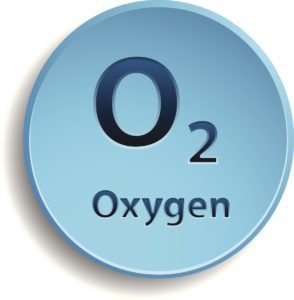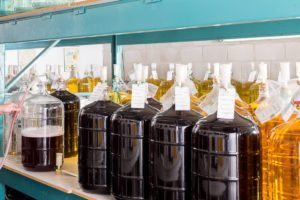Craft & Cork >> Winemaking

How to Identify and Prevent Wine Faults in Your Craft Wine
Every winemaker’s end goal is to produce a wine that is squeaky clean and free of any off aromas or characteristics that would detract from the wines natural flavours and aromas. There are many factors that play an important role in determining a wine’s flavour and aroma–and a wine fault shouldn’t be one of them! This week’s Craft and Cork will teach you where wine faults come from, how to identify them, and most importantly, how to prevent them.
What are Wine Faults?
 So, what are wine faults you might ask? A wine fault is a specific chemical compound that can appear at any stage of the winemaking process and are most often a result of poor winemaking practices or incorrect storage conditions. Each chemical compound associated with the wine fault will give off its own unique flavor, aroma, and even appearance in the wine. Wine faults can be grouped into three main categories based primarily on their origin.
So, what are wine faults you might ask? A wine fault is a specific chemical compound that can appear at any stage of the winemaking process and are most often a result of poor winemaking practices or incorrect storage conditions. Each chemical compound associated with the wine fault will give off its own unique flavor, aroma, and even appearance in the wine. Wine faults can be grouped into three main categories based primarily on their origin.
1. Oxidation Wine Faults
 Oxidation wine faults are a result of exposing the wine to excess amounts of oxygen after the alcoholic fermentation has completed. These include, acetaldehyde (rotten apple), acetic acid (vinegar), and ethyl acetate (nail polish remover). These faults are produced by yeast and bacteria that require
Oxidation wine faults are a result of exposing the wine to excess amounts of oxygen after the alcoholic fermentation has completed. These include, acetaldehyde (rotten apple), acetic acid (vinegar), and ethyl acetate (nail polish remover). These faults are produced by yeast and bacteria that require
oxygen to survive in the wine. Commercial yeast strains will produce all three of these chemical compounds during the fermentation but at levels that are too low to perceive in the wine.
These faults can be prevented by keeping your carboys topped up with wine or by gassing any headspace in the carboy with nitrogen. Also, keeping the free SO2 levels in the wine between 25-35 ppm post fermentation will help prevent the growth of organisms responsible for these wine faults.
2. Sulphur Wine Faults
This category of wine faults produces some of the most off putting aromas found in wine, but luckily, they are the easiest to prevent. These include, sulphur dioxide (matchsticks), hydrogen sulphide (rotten egg), and mercaptan (onion). Hydrogen sulphide is typically the first of these faults to form in the wine during the primary fermentation. If it is not identified and remedied at this  point it can react with alcohol in the wine forming mercaptan which smells like onion, garlic, or skunk (Phewww!).
point it can react with alcohol in the wine forming mercaptan which smells like onion, garlic, or skunk (Phewww!).
Aerating the wine by splashing in the carboy or fermenter is the best way of removing hydrogen sulphide from the wine which will therefore prevent mercaptan from forming. Fermenting your wine at a constant temperature (20-25°C (68-77°F)) will also help prevent these sulphur wine faults from forming.
3. Microbial Wine Faults
 Microbial wine faults are caused by microorganisms (yeast & bacteria) that have come in contact with the wine throughout the winemaking process. These faults include geranium, brettanomyces (barnyard), and cork taint (wet basement).
Microbial wine faults are caused by microorganisms (yeast & bacteria) that have come in contact with the wine throughout the winemaking process. These faults include geranium, brettanomyces (barnyard), and cork taint (wet basement).
Geranium taint is the result of lactic acid bacteria in the wine metabolizing potassium sorbate added to the wine. Potassium sorbate should not be added to wines that have undergone MLF or have been barrel aged.
The guide below can help you identify an off aroma in your wine in case you are not sure what exactly it is or where it came from. Just remember, proper sanitation and fermentation environment can prevent many of these wine faults from occurring in the first place.



Comments are closed.